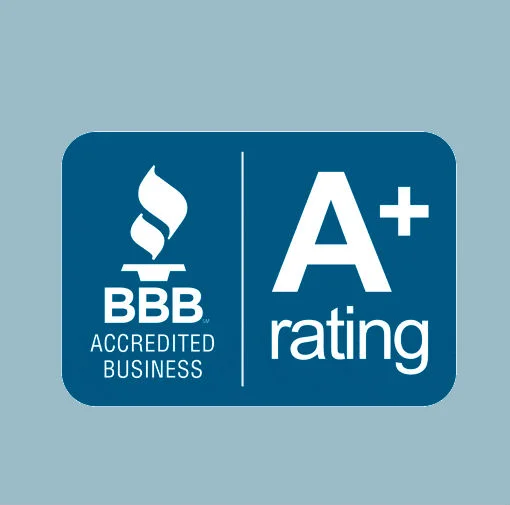How to Market Your Telehealth Services

It was stunning to witness the explosion and adoption of telehealth in the healthcare industry. Just over a year ago, before the COVID impact, the tele-techno adoption rate was zero to glacial at best.
But suddenly, the healthcare industry was transformed from top to bottom. Of necessity, healthcare systems, hospitals and medical practices responded with a dramatic change. And it’s likely that many changes—including telehealth services—are here to stay.
The New Normal Creates a Telehealth Marketing Opportunity
The healthcare industry reinvented its delivery systems in crisis mode. But both providers and patients have come to embrace the benefits of telehealth in no small way.
In its various forms and functions, telehealth (AKA telemedicine, e-health, tele-education, remote medicine, telemedical, mobile health, m-health) has become a powerful and widely accepted new tool. Including tech-enabled delivery in the healthcare mix can reach more patients, enhance the patient experience and the continuum of care. What’s more, it appears that tech-enabled wearables and personal/ monitoring accessories are emerging with the Internet of Things (IoT).
For hospitals, doctors and healthcare practices, the new digital front door is now in place. Some providers have already been making good use of the new environment. Many others may need to pause and consider how this industry evolution shapes the new normal for them.
The major challenge is how to leverage telehealth services and technology for greater performance. Healthcare marketing now demands a new perspective. This service is an excellent opportunity to differentiate and take a leadership position. (And to do so ahead of the competition.)
Rethinking the Four Ps of Marketing
When we teach healthcare marketing, we often refer to the “Seven P Formula,” i.e., Price, Place, Product, Positioning, Packaging, People and Promotion.
All seven may need to be considered, but the following are most relevant.
PRODUCT: Your product/service mix of business has likely changed. The target audience has new expectations. In the new normal, are these right for the new audience? What services are most in-demand for today’s patient consumers? In-person, face-to-face patient encounters are not going away, of course. And there’s a practical limit to what can be achieved remotely. But patients like the greater convenience and providers report gains in office productivity, timeliness and quality care. What’s more, doctor-to-doctor connections are a plus for providers and referring colleagues. Same-day appointments and shorter encounters often benefit both the provider and patient. Telehealth platforms and software are nearly as handy as a stethoscope. There’s an even greater value when some functions are automated. Intake Forms, sign-in and follow-up contacts, as well as online scheduling for appointments, can all be automated today.
PLACE: The point of view—of both the patient and the provider—has changed. It is no longer the brick-and-mortar location alone. The provider may or may not be “in the office” for the encounter. Patient and provider enjoy the convenience of the nearest internet connection. Patient access is expanded for first visits, monitoring, consultations, screenings, professional consults, follow-ups, after-care, care planning and case management, and the like.
Competitive note: Broadly redefining “place” also opens the telehealth digital door to major national services. It’s still essential to have a sense of local (nearby and convenient) connection with the community.
POSITIONING: Is there a fundamental change in how you are positioned in the hearts and minds of your customers? The COVID-world and telehealth services have changed the appearance and reorganized healthcare delivery. What primary characteristics or attributes do patients use to describe the practice? Convenience is a critical factor for most consumers. A new and critical consideration here is that these same forces of change have also impacted the competitive environment. This is a significant opportunity, but the “first movers” of telehealth marketing will have the most critical influence and competitive advantage.
PACKAGING: In the telehealth strategy, health systems and hospitals can package it as part of their convenient mix of services, e.g., family care, urgent care, emergency room and telehealth.
PROMOTION: The challenge is to positively differentiate your services, and communicate your leadership position, to the critical target audiences. These include:
- Referring Providers
- Prospective Patients
- Current Patients
- Family and Caregivers
The family and caregiver audience can be essential when the patient base is older and perhaps homebound.
How to Leverage Your Telemedicine Marketing Opportunity
Technology enhances the provider-patient connection, the patient experience, practice operations as well as the bottom line. Promote this new level of convenience that has universal consumer appeal.
Here are some of the best ways to implement your marketing plan and carry that message to your critical audiences.
- Update your website: Most prospective patients and many current patients make their first and subsequent connections at your website. The chances are that your website has not changed as rapidly as your practice. Feature your telemedicine options and benefits prominently on your website. This is a critical opportunity to revise or replace what people find online. Your website is a branding cornerstone and a powerful reputation builder. It also answers questions, reduces fears and builds rapport.
- Use your patient portal: This is one of the most vital new tools for two-way, secure, online communications. It is a platform for confidential, HIPAA-compliant email, appointments, prescription info, visit summaries, and patient instructions. Create or promote this as part of your new service mix.
- Use SEO/organic and paid social media: Speak directly to target audiences. They are often avid internet users.
- Take advantage of medical charts and personal records: Digital recordkeeping greatly enhances communications for past, present, and future care. Patients and colleagues have a timely and valuable reference in the care continuum.
- Consider professional-to-professional: Busy providers have a better channel to refer, connect and communicate. It is a benefit to the process as well as to timely care.
- Use educational videos: Inform and instruct patients about a medical topic and provide pre-and post-care particulars.
- Invest in external advertising: Does broadcast (radio/TV) fit your plan? Advertising builds your brand and “gets the word out.”
- Send broadcast telehealth marketing emails: Inform past and current patients about telehealth options and how they can benefit.
- Promote the immediacy advantage: The service is an easy, natural, and convenient initial gateway for urgent care.
- Consider branded advertising
- Offer a telehealth option with each patient phone call
- Use broadcast email and social media regularly
- Post POP signage internally: Reinforce your message with in-office signs and posters. Include with staff/provider conversations with patients and keep it fresh.
- Use direct mail to patients and in the community
- Update your local online directory listings
- Update meta information
- Invest in paid social media ads
- Present success stories
- Inspire patients to talk about the service in your reviews
- Present telehealth benefits in blog and newsletters
Why Do This?
Hockey great Wayne Gretzky reminds us that: “I skate to where the puck is going to be, not to where it has been.” The COVID year ignited many advancements for provider and patient. And now the “smart skaters” – meaning hospitals, doctors, health systems – can get ahead of the techno-puck and pick up on new healthcare marketing opportunities.
Now and for the future, these:
- Protect your market share and attract new business
- Build online professional reputation and brand awareness
- Expand geographic service area
- Increase operational efficiency
- Reduce overhead, streamline operational steps
- Expand your healthcare business, grow revenues and the bottom line
- Boost patient satisfaction and retention
- Position the provider/practice as a leader
- Stand ahead of the competition
- Attract and retain referring providers
- Enhance patient experience
Most patients want it. They like the “comfort and convenience” advantages, and they expect these positive changes (and more) as the norm. This is a timely, win-win opportunity to expand and promote telehealth services. (Caution: Your alert competition may have the same opportunity.)
Positive changes have reshaped the healthcare industry, and your marketing message needs to reflect the benefits of virtual care and telemedicine.
If your telehealth marketing plan needs a fresh perspective, connect with us to explore how to leverage your message ahead of the competition.
Related Articles:
Telemedicine & Telehealth Emerge as Medical Marketing Opportunities During COVID
Why Telehealth of Tomorrow Belongs in Your Marketing Plan Today
The Explosive Rise of Telemedicine Will Challenge Your Marketing Plan
Physician Practices Revisit Telehealth to Monetize Time and Differentiate
What’s Driving Telehealth to More Hospitals and Doctors in 2016









